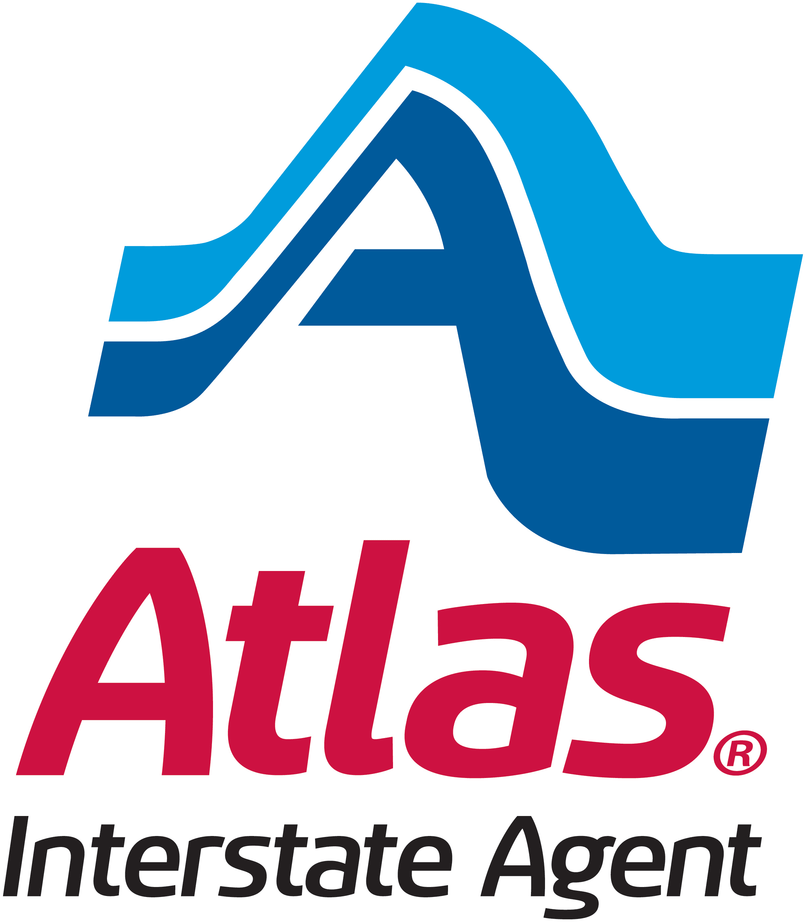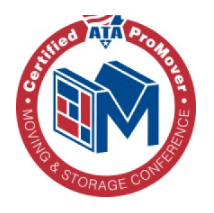How to Move from One House to Another Without Losing Your Mind

Moving a house represents one of life’s most significant logistical challenges, with the average American household containing over 300,000 items to sort, pack, and transport. This complexity often leaves even the most organized individuals feeling overwhelmed by the sheer scope of the task ahead.
A successful relocation hinges on methodical planning and precise execution. At Nelson Westerberg, we’ve refined the art of moving through more than 100 years of industry experience. Our detailed method transforms what many perceive as a challenging task into a structured, manageable process.
From creating an eight-week countdown timeline to managing final-day logistics, every phase of your move requires specific strategies and careful attention to detail. Professional moving services can dramatically reduce the physical and emotional strain of relocation, while proper packing techniques protect your valuable possessions during transit.
Critical tasks like utility transfers and address changes demand equal attention to ensure a seamless transition to your new home.
Industry statistics show that thorough pre-planning can reduce moving-related stress by up to 60%. Whether you’re coordinating a local move across town or orchestrating a complex interstate relocation, understanding the essential components of a successful move empowers you to make informed decisions at every step.
By following proven methodologies and leveraging professional expertise, you can handle your transition with confidence and precision.
Pre-Move Planning And Organization
Precise planning and organization form the cornerstone of a successful relocation. Industry research shows that starting your preparation at least eight weeks before moving day can reduce stress levels by up to 60% and help avoid common costly mistakes.
A structured approach transforms what might seem overwhelming into a series of manageable steps, which is essential when it comes to planning your move successfully.
Creating Your Moving Timeline
A well-structured timeline acts as your strategic roadmap, breaking down the moving process into achievable weekly milestones. Research indicates that families who follow a detailed moving schedule are 40% more likely to report a positive moving experience.
Eight-week countdown checklist
- 8 weeks before: Research moving companies and gather detailed quotes
- 6 weeks before: Begin systematic decluttering and initial organization
- 4 weeks before: Start packing non-essential items and arrange utility transfers
- 2 weeks before: Pack room-by-room, maintaining a clear inventory
- 1 week before: Focus on cleaning and final confirmations
- Moving day: Keep essential items in a clearly marked “first night” box
Key milestones and deadlines
Essential deadlines require careful attention:
- Moving company reservation: 6-8 weeks in advance
- Change-of-address submission: 2 weeks before moving
- Utility scheduling: 7-10 days before move date
- Final walk-through: 24-48 hours before departure
Setting A Realistic Budget
Expected costs breakdown
Primary moving expenses typically include:
-
- Professional moving services or truck rental
- Quality packing materials and supplies
- Moving insurance coverage
- Transportation and fuel costs
- Labor fees (based on distance, volume, and service level)
By taking advantage of tools to accurately calculate your moving costs, you can better understand your potential financial commitment.
Hidden expenses to consider
Plan for these often-overlooked costs:
- Storage fees (temporary or long-term)
- Specialty item packing services
- Building permits and parking fees
- Elevator reservations for apartments
- Professional cleaning services
- Temporary accommodation
- Moving day meals and refreshments
- Time off work considerations
Choosing Your Moving Method
Professional movers vs. DIY
The decision between professional and DIY moving impacts both budget and experience. Professional services provide expertise, proper equipment, and insurance coverage. While DIY moves may reduce initial costs, consider these factors:
- Time investment required
- Physical demands and safety concerns
- Equipment rental needs
- Insurance and liability issues
- Vehicle requirements and restrictions
For a deeper analysis, compare self-service and full-service movers to better understand the pros and cons of both options and to see which one is right for you.
Hybrid moving options
Hybrid solutions offer customizable combinations of professional and DIY services:
- Professional loading/unloading with self-transport
- Full-service packing with DIY transportation
- Partial packing services for specialty items
- Labor-only assistance for heavy items
- Storage solutions with self-managed packing
This flexible approach allows you to balance cost-effectiveness with convenience, tailoring services to your specific needs and budget constraints.
Professional Moving Services Guide
Professional moving services transform the challenging task of relocation into a streamlined, manageable process. Industry research shows that households using professional movers report 60% less stress during their transitions compared to DIY moves.
These services combine specialized expertise, proper equipment, and proven methodologies to protect your belongings and peace of mind. Learn more about choosing a moving company to simplify your moving experience.
Local Moving Solutions
Benefits and considerations
- Trained personnel with knowledge of proper lifting and handling techniques
- Professional-grade moving equipment and protective materials
- Complete insurance coverage for added security
- Expert navigation of local building codes and parking restrictions
- Time-tested packing methods that prevent damage during transit
Local moving services bring valuable expertise in handling neighborhood-specific challenges. Their familiarity with building regulations and traffic patterns helps avoid common pitfalls that often plague DIY moves.
Cost structures
Local moving services typically operate on an hourly rate system that includes:
- Base labor costs for professional movers
- Truck fees and fuel charges
- Basic furniture protection
- Standard liability coverage
Additional services available for customized protection:
- Premium packing materials
- Specialty item handling
- Short-term storage solutions
- Enhanced valuation coverage
Most established moving companies provide detailed written estimates following an in-home assessment, ensuring transparency and accurate budgeting.
Interstate Moving Requirements
Legal considerations
Interstate relocations must meet specific federal guidelines and documentation requirements. Professional moving companies maintain active licensing and registration with the Federal Motor Carrier Safety Administration (FMCSA). This compliance ensures customers receive:
- Detailed documentation of rights and responsibilities
- Clear valuation coverage options
- Established dispute resolution procedures
- Protection under federal moving regulations
Special permits needed
Interstate transport often requires additional documentation for specific items:
- Hazardous materials certification
- Firearms transfer paperwork
- High-value item documentation
- State-specific permits
Professional movers handle these complex requirements daily, ensuring full compliance while safeguarding your valuable possessions throughout the journey.
Long-Distance Moving Strategies
Planning considerations
Successful long-distance moves require careful coordination and timing. Key elements include:
- Strategic scheduling during off-peak seasons
- Coordination of pickup and delivery windows
- Temporary storage arrangements when needed
- Backup plans for unexpected delays
Professional moving services provide dedicated trucks and experienced crews who understand the unique challenges of long-distance moving. Their expertise helps anticipate and prevent common long-distance moving complications.
Cost-saving techniques
Smart planning can significantly reduce long-distance moving expenses without compromising service quality:
- Consider consolidated shipping options
- Schedule moves during off-peak seasons (October-April)
- Declutter before packing begins
- Choose appropriate insurance coverage levels
- Book services well in advance for better rates
Industry data shows that early booking can save up to 25% on long-distance moving costs. Professional movers can help identify additional savings opportunities while maintaining the security and efficiency of your relocation.
The Art Of Efficient Packing
Efficient packing stands as the foundation of a stress-free moving experience. Research shows that proper packing techniques can reduce damage claims by up to 40% while significantly decreasing loading and unloading times.
Discover some essential packing tips for moves to protect your belongings and create a systematic approach to your entire relocation process.
Essential Packing Supplies
Quality materials selection
Professional-grade moving boxes offer 3x more protection than recycled containers, making them a worthwhile investment for your valuable belongings. Essential supplies include:
- Heavy-duty packing tape with dispensers
- Industrial-grade bubble wrap for fragile items
- Furniture padding and moving blankets
- Acid-free packing paper to prevent scratches
- Specialized containers for mirrors and artwork
- Wardrobe boxes with built-in hanging rods
Quantity estimation tools
The home size directly correlates with packing material requirements. For a three-bedroom home, industry standards recommend:
- 40-60 medium boxes (3 cubic feet each)
- 20-30 large boxes (4.5 cubic feet each)
- 10-15 small boxes (1.5 cubic feet each)
- 3-4 dish packs with cell dividers
- 6-8 wardrobe boxes
- 15% additional supplies for contingencies
Room-By-Room Packing Strategy
Priority sequence
Strategic packing begins eight weeks before moving day, following a systematic approach:
- Storage areas and rarely-used spaces
- Seasonal items and decorative pieces
- Non-essential kitchen items and extra linens
- Books, media, and entertainment items
- Daily-use items (pack 24 hours before moving)
Create a dedicated staging area for packed boxes to maintain living space functionality throughout the process.
Special items handling
Valuable and delicate items demand precise packing methods:
- Electronics: Use anti-static bubble wrap and original boxes when possible
- Fine china: Pack pieces vertically with bubble wrap dividers
- Artwork: Apply corner protectors and custom crating for valuable pieces
- Musical instruments: Utilize climate-controlled storage solutions
- Antiques: Document condition with detailed photographs before packing
Smart Labeling System
Color coding methods
Implement an intuitive color-coding system:
- Red: Kitchen items
- Blue: Bedroom contents
- Green: Living areas
- Yellow: Bathroom supplies
- Orange: Fragile items
- Purple: Important documents
Mark boxes requiring special handling with prominent directional arrows and “FRAGILE” labels.
Digital inventory tracking
Modern inventory management enhances moving efficiency:
- Photograph box contents before sealing
- Assign unique numerical identifiers to each container
- Create a digital spreadsheet with box numbers, contents, and destination rooms
- Use QR codes for instant content identification
- Track high-priority items with detailed notes
- Document valuable items with photos and serial numbers
Logistics And Coordination
Successful moves require thorough attention to logistical details and precise coordination of multiple services. A well-planned approach ensures your belongings arrive safely while maintaining essential services throughout your relocation journey.
Utility Transfer Management
Disconnection Schedule
-
- Schedule utility disconnections for your move-out day, maintaining services until your final departure
- Contact providers 2-3 weeks before moving to arrange final meter readings
- Essential utilities to address:
- Electricity
- Gas
- Water
- Internet
- Cable services
- Request final bills be forwarded to your new address or set up automatic payments to prevent overlooked charges
New service setup
Research local utility providers and compare rates for your new residence. Schedule service activation one day before your arrival to ensure immediate comfort in your new home.
Peak moving seasons often have limited installation appointments, particularly for internet and cable services. Consider a mobile hotspot as a temporary solution for immediate internet connectivity upon arrival.
Address Change Procedures
Official documentation
Submit your change of address with the United States Postal Service at least two weeks before moving day. Each state has specific timeframes for updating driver’s licenses and vehicle registrations – research these requirements early.
Contact insurance providers to verify coverage transitions smoothly to your new location. For more details on updating your address after moving, follow comprehensive checklists to ensure every critical organization is informed. Secure any required permits or parking permissions for moving vehicles at both your current and future residences.
Notification checklist
Priority contacts for address updates:
- Employers and HR departments
- Banks and financial institutions
- Credit card companies
- Subscription services
- Medical providers
- Educational institutions
- Government agencies
- Professional organizations
Set up mail forwarding services to catch any overlooked correspondences during your transition period. Industry data shows that nearly 40% of movers miss at least one critical address update during their relocation.
Insurance And Protection
Coverage options
Understanding your insurance options helps protect your investment during the move:
- Review existing homeowner’s or renter’s insurance policy coverage
- Evaluate additional moving insurance options
- Compare basic liability coverage vs. full replacement value protection
- Verify your moving company’s insurance certificates
Valuable items documentation
Protect your valuable possessions with thorough documentation:
-
- Create detailed inventory lists including serial numbers
- Take clear, dated photographs of items before packing
- Store essential documents separately from the main shipment
- Consider additional insurance riders for:
- Artwork
- Antiques
- Jewelry
- Electronics
- Family heirlooms
Research indicates that proper documentation can expedite insurance claims by up to 60% and increase the likelihood of full-value recovery for damaged items.
Moving Day Success Plan
A moving day represents the final step in your relocation journey. Drawing from extensive experience in residential moves, Nelson Westerberg has developed a proven approach to ensure a seamless transition to your new home.
Essential Moving Day Kit
Must-have items
Personal Care Box:
- Daily medications and prescriptions
- Basic toiletries and personal hygiene items
- Change of clothes for each family member
- Clean bedding and towels
Immediate Access Items:
- Basic tool set (screwdrivers, pliers, scissors)
- Phone chargers and portable batteries
- Important documents in a waterproof folder
- Essential cleaning supplies
First Night Necessities:
- Paper plates and disposable utensils
- Coffee maker and basic refreshments
- Snacks and water bottles
- Basic kitchen cleaning supplies
Emergency supplies
Safety Essentials:
- Thorough first aid kit
- Over-the-counter pain relievers
- Band-aids and antiseptic wipes
- Emergency flashlights with fresh batteries
Important Contact Information:
- Local utility companies
- Insurance provider details
Moving the coordinator’s direct number
- Nearest medical facilities
Coordination With Movers
Communication protocols
Start your moving day with a brief team meeting to align expectations. Exchange mobile numbers with your crew leader and review the day’s timeline. Create a shared understanding about handling special items or specific concerns. Keep your moving coordinator’s contact information readily available for immediate support or clarification.
Loading supervision
Monitor the loading process from a safe distance while allowing the professional team to work efficiently. Pay special attention to:
- Proper padding and protection of furniture
- Secure handling of fragile items
- Clear labeling of boxes containing delicate items
- Special care for high-value possessions
Final Walkthrough Procedures
Current home checklist
Interior Inspection Points:
- All rooms, closets, and storage spaces
- Attic and basement areas
- Built-in cabinets and drawers
- Appliances and fixtures
Property Verification:
- Utility meter readings
- Window and door security
- Thermostat settings
- Documentation of property condition
New home inspection
Pre-Move-In Checklist:
- Working utilities (electricity, water, gas)
- Functional HVAC system
- Clean and accessible entryways
- Proper lighting in all rooms
Move-In Preparation:
- Clear pathways for furniture
- Protected flooring in high-traffic areas
- Designated spaces for immediate-need items
- Documented property condition with photos
Frequently Asked Questions
- How far in advance should I start planning my move?
Industry research recommends beginning your move planning 8-12 weeks before your target date. This window provides ample time for essential tasks like decluttering, comparing moving quotes, and scheduling services.
For homes larger than 2,000 square feet or interstate relocations, consider extending this timeline to 12-16 weeks to secure preferred moving dates and address specific requirements for long-distance transport.
- What items should I avoid packing in a moving truck?
Federal regulations prohibit the transport of hazardous materials in moving vehicles, including:
-
- Flammable items (gasoline, propane tanks, paint)
- Aerosol products and cleaning chemicals
- Ammunition and firearms
- Perishable food items
- Live plants (especially for interstate moves)
Keep essential documents, valuable jewelry, medications, and irreplaceable family heirlooms with you during transport. These items require special attention and shouldn’t be placed in the moving truck.
- How can I protect valuable items during the move?
Create detailed documentation of valuable items through photographs and written descriptions before packing begins. Invest in professional-grade packing materials designed specifically for delicate items, such as custom crates for artwork or specialized boxes for electronics.
Industry standards recommend purchasing additional insurance coverage for items valued over $100 per pound. White glove moving services offer enhanced protection through specialized handling protocols and climate-controlled transport options.
- What’s the best way to handle pets during moving day?
Establish a quiet, secure space for pets away from moving activities, ideally in a familiar room with proper ventilation. Prepare a dedicated pet moving kit containing:
- Regular food and water supplies
- Current medications
- Comfort items and familiar toys
- Updated ID tags and vaccination records
For moves exceeding 100 miles, research state-specific pet transportation requirements and obtain necessary health certificates at least 30 days before moving day.
- How do I estimate the right size moving truck or container?
Professional moving standards provide these general guidelines:
- Studio/1 bedroom (500-900 sq ft): 10 to 15-foot truck
- 2-3 bedrooms (900-1500 sq ft): 20-foot truck
- 4+ bedrooms (1500+ sq ft): 26-foot truck
Factor in specialty items like pianos, artwork, or outdoor furniture when calculating space requirements. A professional moving assessment can provide precise sizing recommendations based on a detailed home inventory, helping prevent costly truck size miscalculations.
Conclusion
Moving to a new home marks a significant life transition that requires strategic planning and methodical execution. Industry statistics show that well-organized moves typically take 30-50% less time and reduce stress levels by up to 60% compared to unplanned relocations.
Breaking down your move into manageable phases transforms this complex process into an achievable goal.
Consider these essential elements for a successful move:
- Create a detailed timeline starting 8 weeks before moving day
- Document all moving-related expenses and paperwork
- Research and compare professional moving services
- Develop room-by-room packing strategies
- Set up utilities and address changes in advance
The decision between DIY moving and professional services impacts both your budget and peace of mind. Research indicates that while DIY moves can save 20-30% upfront, they often result in hidden costs like equipment rental, potential damage, and valuable time investment.
Professional moving services offer complete protection for your belongings and significantly reduce physical strain.
Professional moving companies like Nelson Westerberg bring over a century of expertise to ensure your possessions arrive safely at their destination. Our experience shows that proper planning combined with professional support results in 90% fewer complications during the moving process.
Each relocation receives customized attention, recognizing that your moving needs are as unique as your home.
Your successful transition begins with informed preparation and ends with a well-executed move to your new home. By implementing proven moving strategies and securing reliable support when needed, you’re positioned to begin your next chapter with confidence and peace of mind.
Related Articles
Where to Move from Texas: Top 10 States for Ex-Texans in 2025

Where to Move from Texas: Top 10 States for Ex-Texans in 2025 Record numbers of Texans are exploring life beyond state lines, driven by soaring housing costs, evolving career landscapes, and the search for new lifestyle opportunities. The decision to leave Texas stirs intense emotions – after all, the Lone Star State‘s unique culture and […]
Read MoreHow to Move a House from One Location to Another: Planning to Completion

Relocating an entire house might seem like something out of a movie, but this remarkable feat of engineering happens more often than you’d think. From preserving historic mansions to saving beloved family homes from coastal erosion, house moving represents the intersection of cutting-edge engineering and practical problem-solving. With project costs typically ranging from $18,000 to […]
Read More




